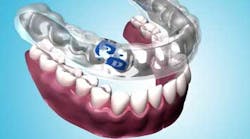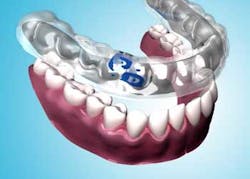A guideline for clinical practice: The search for a successful adjunctive periodontal therapy
In July 2015, the Journal of the American Dental Association published an “Evidence-based clinical practice guideline on the nonsurgical treatment of chronic periodontitis by means of scaling and root planing with or without adjuncts.” A panel of 16 experts conducted a systematic review of the literature to formulate the guidelines. The goal is to help general practitioners verify the importance of scaling and root planing (SRP) and evaluate the benefits of locally delivered and systemic adjuncts to SRP in the treatment of periodontal disease. The publication reaffirms SRP as the gold standard and raises questions about the benefits of adjunctive therapies.
More recently, Professor Emeritus Dr. Charles Cobb, one of the 16 experts, was interviewed by Periospectives magazine, a publication of the American Academy of Periodontology, about the impact of these guidelines on practitioners and patients. He raised an additional concern about cost-benefit analyses of adjunctive therapies and questioned why practitioners would continue to use the adjunctive therapies if none of them resulted in a measurable gain over SRP alone.
ADDITIONAL READING | Increasing dental case acceptance through the use of salivary diagnostics
The problem for all practitioners is that the guidelines offer only a limited evaluation of adjunctive care. The choice of clinical attachment level (CAL) over probing depth (PD) or a reduction in gingival bleeding as the primary outcome measurement for the guidelines makes good sense for researchers, but PD or a permanent reduction in bleeding would be more useful to everyday practitioners than CAL.
To be sure, CAL provides a measurement of periodontal health and stability (or lack thereof), but CAL does not change dramatically between office visits for most patients with chronic periodontitis. PD and bleeding are more immediate indicators of real-time periodontal health and more easily used to determine what treatments are working or recommended when a patient is sitting in the chair and treatment decisions need to be made.
ADDITIONAL READING | Manage, repair, or regenerate periodontal disease?
The range of recommendations in this review (strong, in favor, weak, expert opinion for, expert opinion against, and against) also limits the usefulness of these guidelines for everyday practitioners. The labels are not self-explanatory. For example, the authors are careful to explain that “expert opinion for does not imply endorsement, but instead signifies that evidence is lacking and the level of certainty in the evidence is low.” What? Readers should be forgiven if they are confused.
Clearly, it is challenging to complete an evidenced-based review. Studies are rarely designed to be compared to each other in a systematic way. Only 72 publications out of 1,190 qualified for the review, and among these 72, the authors noted “inconsistency among studies regarding the number of tooth sites and teeth assessed.” I would paraphrase Dr. Gordon Christensen’s recent comments (Christensen G. Observations on current controversies in dentistry. Dentistry Today. November 2015;34:100–105) that authors of any meta-analysis report are often more enamored with the concept of evidenced-based dentistry than they are in reviewing clinically useful information. Further, to provide a more nuanced evaluation, the authors of this report noted that the magnitude of benefits and the potential for adverse events (AEs) were factored into the assessments, yet many “studies either reported no AEs or did not include assessment of AEs.”
Ultimately, the care we provide continues to fall upon our professional judgment and on the individual needs and preferences of our patients. In my own practice of 43 years, I aim for solid teeth, little to no bleeding, and minimal pocket depth achieved by clinical attachment gain or pocket depth reduction achieved with tissue shrinkage or surgical intervention.
Bleeding is my primary indicator of health. I’ve tried every nonsurgical therapy reviewed in the guidelines. Most of them have some effectiveness and work for a varying, limited length of time, and must be constantly redone. The system I’ve found most helpful to reduce bleeding and inflammation isn’t included in the guidelines.


